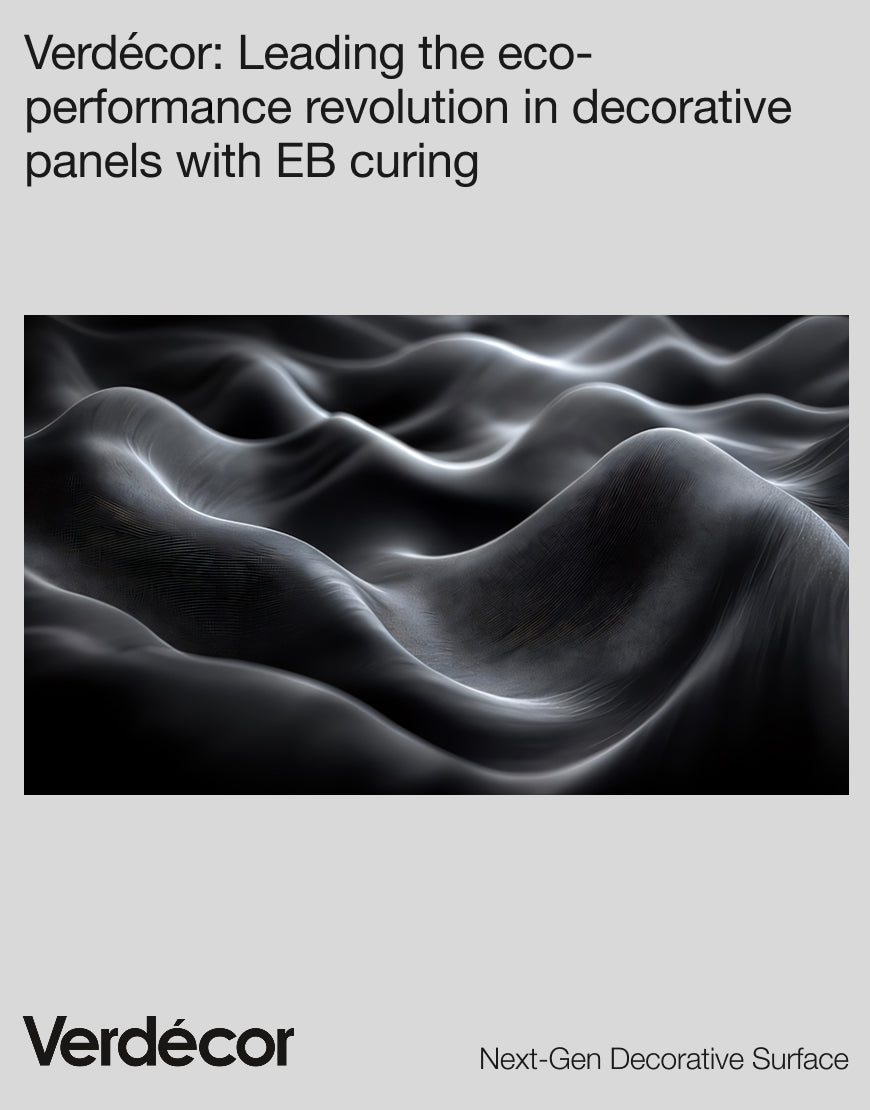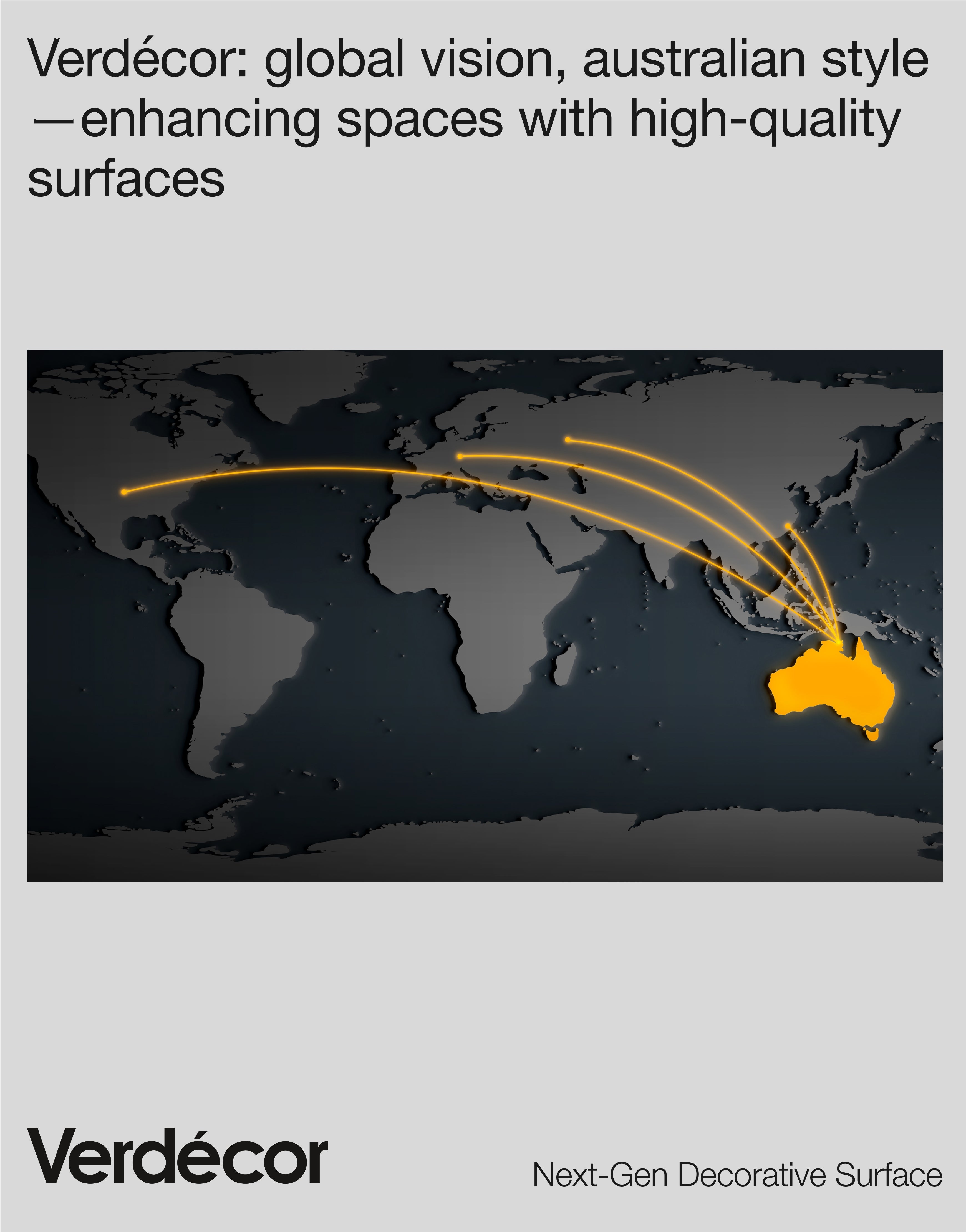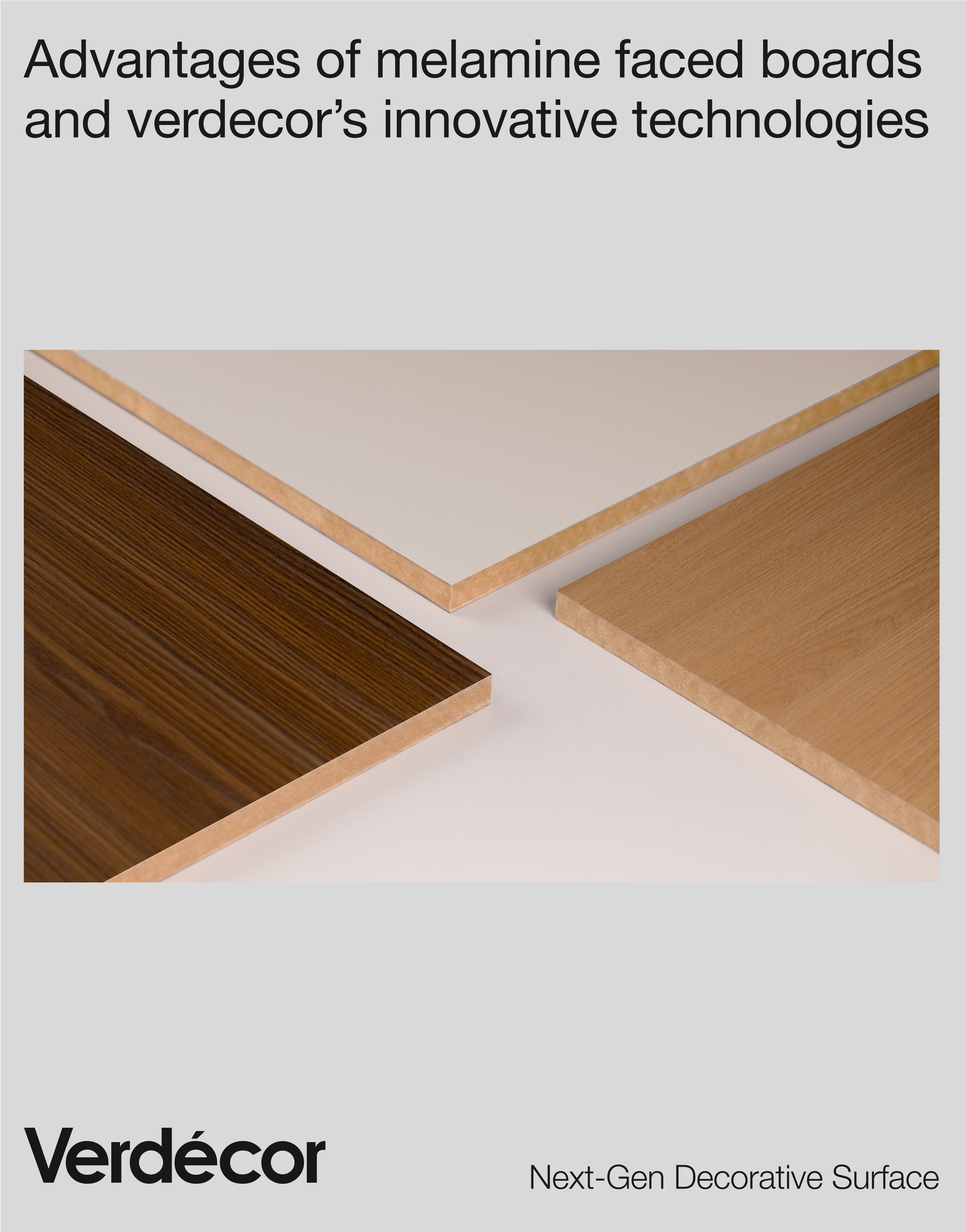At Verdécor, our mission is to merge cutting-edge technology with sustainable development to create top-tier surface materials that are both visually appealing and eco-friendly. Electron Beam (EB) curing stands as a cornerstone of our NanoMatte, WoodGrain Nano, and FineMatte collections. In this article, we’ll dive into the history, technical advantages, underlying science, and transformative impact of EB curing in the decorative panel industry.
Historical Background of Electron Beam (EB) Technology
Originally conceived for aerospace and heavy-duty industrial applications, electron beam technology was used to process high-strength materials and enhance surface durability.
-
1970s: EB made inroads into surface treatment, especially for decorative panels, boosting product performance.
-
21st Century: Growing global awareness of sustainability further propelled EB curing’s rise as a green, high-performance process in premium panel manufacturing.
-
Present Day: EB is firmly established as a mainstream technique, highly regarded for its efficiency and eco-friendly attributes.
What Is Electron Beam (EB) Curing?
EB curing utilizes high-energy electron beams to directly crosslink coating molecules, forming a dense and uniform surface. Unlike traditional UV or thermal methods, EB does not require photoinitiators or elevated temperatures. Key steps include:
-
Electron Beam Irradiation: High-energy electrons activate molecular bonds in the coating.
-
Rapid Molecular Crosslinking: A stable three-dimensional network forms instantly.
-
Instant Curing: The process completes without additional heat or chemical catalysts.
Why Choose EB Technology?
-
Significant Reduction in VOC Emissions
-
Conventional UV and thermal curing often use solvent-based coatings or photoinitiators, major sources of VOCs.
-
EB eliminates the need for these materials, achieving near-zero VOC emissions and fostering a safer, more eco-friendly environment.
-
-
Outstanding Anti-Yellowing Performance
-
Photoinitiators in UV curing can break down under UV light, causing yellowing.
-
EB curing directly crosslinks molecules without photoinitiators, significantly lowering the risk of discoloration and preserving vibrant panel colors.
-
-
Superior Antibacterial Properties
-
The ultra-dense molecular structure from EB curing minimizes bacterial and viral adhesion.
-
Ideal for kitchens, medical facilities, and other hygiene-sensitive spaces.
-
-
Thermal Repair Capability (Exclusive to NanoMatte)
-
Verdécor’s NanoMatte series leverages EB curing for thermal repair.
-
Minor surface scratches can be fixed with moderate heat, maintaining a pristine, premium look.
-
-
Enhanced Energy Efficiency
-
EB curing doesn’t require high temperatures, cutting energy consumption and carbon emissions compared to traditional thermal processes—aligning perfectly with Verdécor’s green philosophy.
-
-
Hardness and Durability
-
EB curing greatly improves surface hardness; for example, NanoMatte can reach up to 4H, delivering strong scratch and abrasion resistance for everyday applications.
-
How EB Technology Elevates Verdécor Products
-
NanoMatte: The Pinnacle of Dual Curing
-
Step One: Excimer Curing
Excimer UV light at 172nm produces a unique micro-matte surface, creating an ideal foundation for EB curing. -
Step Two: EB Curing
Further enhances hardness, yellowing resistance, and antibacterial properties, along with offering minor thermal repair for light scratches.
-
-
WoodGrain Nano
-
Authentic Wood Texture: EB amplifies wood grain details for a more realistic appearance.
-
Exceptional Yellowing Resistance: Wood tones stay consistent under prolonged light exposure.
-
Versatile Applications: Suits both contemporary interiors and classic designs.
-
-
FineMatte
-
Elegant Matte Finish: EB curing imparts a smooth, low-gloss surface with improved scratch resistance.
-
Antibacterial Functionality: The dense structure wards off bacterial adhesion, perfect for high-touch areas.
-
Solidification Technology Comparison Table
| Technology Type | UV Curing | Excimer Curing | EB Curing |
|---|---|---|---|
| Principle | Uses ultraviolet light and photoinitiators to cure | Employs 172nm excimer light to achieve a matte finish | Utilizes high-energy electron beams to directly crosslink molecules |
| Advantages | Relatively low cost, fast processing | Superior matte texture, good yellowing resistance | Near-zero VOC emissions, antibacterial, anti-yellowing, thermal repair |
| Disadvantages | Prone to yellowing, less durable | High equipment cost, complex process | High equipment cost, advanced technical requirements |
| Yellowing Resistance | Average | Good | Excellent |
| Antibacterial Performance | Average | High | Very High |
| Hardness | High | High | High |
The Equipment and Process Behind EB Technology
Implementing EB requires specialized, high-energy electron accelerators and precision radiation systems, supported by stringent production controls. Only a handful of companies worldwide hold the technical qualifications to manage this demanding setup. Verdécor is proud to be among this elite group, guaranteeing that each product meets rigorous quality and safety standards.
Sustainability Advantages of EB
-
Eco-Friendly Materials
-
Verdécor uses FSC-certified fast-growing wood, helping reduce reliance on natural forests.
-
-
VOC Emission Reduction
-
EB curing produces negligible VOCs, minimizing pollution and creating healthier indoor spaces.
-
-
Energy Saving and Emission Reduction
-
High energy efficiency and a low carbon footprint align with global efforts to protect the environment.
-
The Future of EB Technology
Electron beam curing is more than a technological step forward—it’s a transformative breakthrough in surface treatment. By integrating this innovative method with Verdécor’s creative designs, our products set new standards for environmental performance, durability, and aesthetics. From NanoMatte’s thermal repair features to WoodGrain Nano’s lifelike wood finishes, EB technology continues to redefine what premium decorative panels can achieve.
At Verdécor, we will keep pushing EB technology forward, discovering new applications and improvements that raise the bar for eco-friendly, high-performance decorative surfaces.




























